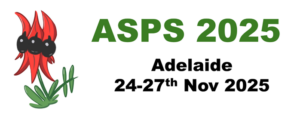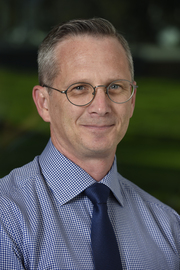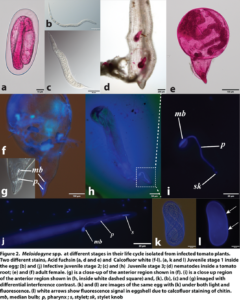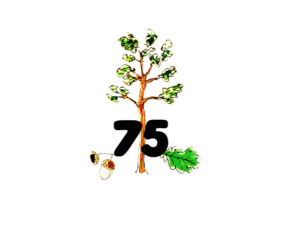Welcome to the May 2025 Phytogen!
This month, we are pleased to bring you exciting updates about the upcoming ASPS Conference 2025 in Adelaide, including session titles and provisional program information. We feature a message from our new ASPS President, Professor Brent Kaiser, outlining his vision for the Society’s future direction and initiatives. We also introduce Dr. Lim Chee Liew, our Cell Biology Discipline Representative, who shares insights into her research journey and vision for representing the cell biology community. We also share an announcement of the 75th anniversary of the Journal Experimental Biology SymposiumDon’t forget to check the extended application deadline for our prestigious awards and ensure your membership is up to date!
You can stay connected with ASPS on social media on the following platforms:
LinkedIn: Australian Society of Plant Scientists
BlueSky: @asps-oz.bsky.social
Join the conversation using #AusPlantSci and #ASPS2025 (for the conference). Tag us in your posts to help us promote your science! Phytogen contributions will also be featured on our social media pages.
We welcome contributions from students, E/MCRs and established researchers at any time for publication in Phytogen. It is free and a great way to give your research profile a boost and share your findings! You can send your contribution to our editors Raz (razlin.azman@csiro.au) or Lucas (L.Auroux@latrobe.edu.au). An example of an E/MCR contribution from Dr. Francine Perrine-Walker is available at the end of this issue. We also welcome Francine as the newest member of the Communications & Website sub-committee. She also handles our Society LinkedIn page.
ASPS 2025 Conference Update
We are excited to announce that the conference logo is now available, and provisional program details have been released for the ASPS 2025 Conference. Registration opens in June 2025, and we encourage you to start planning your participation!
Session Lineup:
- The Future of Plant Science (student-led)
- Teaching, Outreach & Indigenous Learnings
- Nurturing Symbiosis – Insights from Early and Mid-career Researchers
- Stress Sensing, Signalling and Membrane Transport
- Plant Evolution & Ecology
- New Technologies & AI in Plant Science
- Plant Nutrition & Development
- Frontiers in Genetics & Molecular Biology
- Synbio / Green Biomanufacturing
- Plant Organelle & Energy Biology
- Industry-led Session
For more information about the conference, including abstract submission guidelines and registration details, visit the conference website: https://www.asps.org.au/asps25.
If you have any questions about the conference, contact Dr. Crystal Sweetman at crystal.sweetman@flinders.edu.au.
Award Applications Deadline extended!
Applications for the prestigious ASPS awards (Jan Anderson Award, Peter Goldacre Award, Teaching and Outreach Award) have been extended until 6 June 2025. The winners will be given an opportunity to present at this year’s conference in Adelaide
For detailed information and application guidelines, click here.
Update from the Society Executive
Thanks for checking in and reading the recent Phytogen issue. Phytogen has been an important and cherished communication platform for ASPS, offering all members an opportunity to highlight their recent plant science activities. This year, we’ve decided to include an ASPS executive report in future Phytogen issues to broaden the communication between the executive and ASPS members. We think this will be a better way to communicate what is happening in ASPS and report on our ongoing activities.
Since I’ve taken the reign as President of ASPS in January 2025, it’s been an interesting time re-acquainting myself with the inner workings of the society and trying to understand the current and future role ASPS has for the diverse group of plant scientists it represents. My previous tenure as Treasurer (2014-16) was enjoyable, in that I met many new members (especially the aspiring students) who came to the society to be part of the larger Plant Science community across Australia. Now as President, a bit greyer, battered and hopefully wiser, I’m intrigued of where we can take ASPS and how best to see its growth and prominence expand amongst the scientific societies across Australia.
Ensuring our plant science community remains together and interconnected will be a priority of mine and the executive for the next two years. I’m quite aware of how time poor each of us is, and how this can undermine the required engagement necessary to make societies like ASPS tick. The executive will work hard to ensure relevance of ASPS to minimize possible slips in engagement or interest.
Looking forward, our society requires growth and a larger presence domestically and internationally to help manage the many external influences, including fickle whims of our funding agencies towards plant science, the proliferation of alternative sub-disciplinary groupings diluting the plant science community, and the ongoing indifference by many in government and the community towards the importance of plants to a healthy and sustainable society.
Over the last two months, we’ve been reaching out to other Australian and international plant-related societies to create new partnerships and reciprocal membership opportunities to broaden the scope of an ASPS member, including equal access to society activities (meetings, seminars, and maybe student fellowships). We hope to finalise a number of these partnerships over the coming months which will enable greater choice for all ASPS members, but most importantly strengthen the link between Plant Scientists often separated by their disciplinary niche and region. The greater the base and the interconnectedness, the more effective we will be in influencing representation in new funding opportunities and supporting our existing and future plant scientists to remain excited and engaged in the plant sciences. I look forward to the upcoming discussions.
Kind regards,
Brent N. Kaiser
President of the Australian Society of Plant Scientists.
Cell Biology Discpline Representative
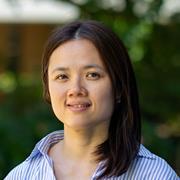 Connecting cells, scientists, and stories: my journey in plant science
Connecting cells, scientists, and stories: my journey in plant science
By Lim Chee Liew, Research Fellow
ASPS Cell Biology Discipline Representative, l.liew@latrobe.edu.au
X: @LimCheeLiew; Academic Profile.
It’s an honour to step into the role of Cell Biology Discipline Representative for the Australian Society of Plant Scientists (ASPS). This opportunity comes at a reflective time in my career where research, communication, and community-building continue to intersect in exciting ways.
From legumes to single cells
My journey into plant biology began with a fascination for the unseen mechanisms that guide life in plants. From my early work in legume photoperiodism during my PhD at the University of Tasmania, I’ve since traversed fields from soybean flowering to single-cell transcriptomics in Arabidopsis and barley. Over time, the scale of my research has progressively narrowed, from studying whole plant systems to zooming in on individual cells and molecular networks. Over the past decade, I’ve had the privilege of working across institutions like the University of Melbourne and La Trobe University, with collaborators spanning Australia, Europe, and Asia.
Today, as a postdoctoral fellow at La Trobe University’s AgriBio, my work focuses on applying cutting-edge genomic and single-cell technologies to understand how plant cells acquire identity and coordinate during critical developmental processes including seed dormancy and germination. It’s a thrilling time to be a plant cell biologist, especially as spatial and single-cell methods begin to reshape how we view tissue complexity and cellular dialogue in plants.
From plants to pipelines
A tipping point came during a transcriptomics project. I had collaborators handling the bioinformatics, but I felt disconnected when I was unable to interpret the data or even ask the right questions. I didn’t want to be a passenger on this journey. I wanted to co-pilot it.
As a wet lab plant scientist with no formal training in coding, stepping into the world of Bash, R, and Python was initially overwhelming as these tools felt as foreign as a new language. The learning curve was steep, and I encountered every common mistake, from misplacing commas in scripts to accidentally deleting files. Yet, each error became a learning opportunity. With help from online courses, open-source communities, and persistent trial-and-error, I slowly gained the confidence and skills to manage my own data analyses.
This transformation, from data-dependent to data-empowered, has made me a more independent and integrative researcher, capable of connecting experimental biology with computational insight.
Bringing Research to Life Through Communication
Beyond the bench, I’ve long been committed to bridging science and society. Whether delivering a public talk at Pint of Science (“How do plant cells work together to start their life?”) or delivering an outreach program like “Plant Life on Mars” for secondary students, I believe in making plant science tangible and relevant.
I’m especially interested in how communication strategies, from public talks to social media, can amplify research impact. In our age of open science and digital connectivity, every plant scientist is also a potential science communicator. It’s a responsibility I embrace wholeheartedly.
Championing Community and Mentorship
Equally rewarding has been my role in fostering the scientific community within universities and beyond. As chair of a social and wellbeing committee at La Trobe, I’ve helped create events that strengthen connections across research teams. As a lecturer and supervisor, I mentor the next generation of plant scientists, guiding projects in genomics and transcriptomics and helping students grow as thinkers, collaborators, and communicators.
Through these experiences, I’ve come to see community-building as essential scientific work, not separate from our research but supportive of it. After all, thriving science depends on thriving scientists.
Looking Ahead: Representing Our Cell Biology Community
As the ASPS Cell Biology Discipline Representative, I hope to amplify the voices and needs of researchers working in our dynamic field. Whether you’re investigating organelle dynamics, transcriptomes, or applying omics to dissect cellular development, I want to hear from you.
Let’s find ways to connect our work more broadly through joint symposia, early-career researcher highlights on social media, or outreach opportunities that showcase the relevance of plant biology to real-world challenges. If you’re keen to get involved or share ideas, please get in touch. I’m excited to serve and grow with this vibrant community.
E/MCR Contribution
 Fluorescence in the root knot nematode’s pharyngeal region – Is it an artefact of calcofluor white staining?
Fluorescence in the root knot nematode’s pharyngeal region – Is it an artefact of calcofluor white staining?
by Francine Perrine-Walker (PhD), University of Sydney
Member, ASPS Communications & Website Sub-committee
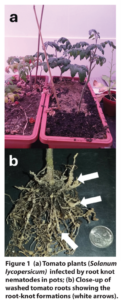 A paper by Sun et al. [1] demonstrated that the free-living soil nematode Pristionchus pacificus had two chitin synthases, chs-1 and chs-2, key enzymes for chitin synthesis in eggshell and teeth formation respectively. The same authors highlighted by bioinformatic analyses that both chs genes were conserved in other species including Meloidogyne hapla [1].
A paper by Sun et al. [1] demonstrated that the free-living soil nematode Pristionchus pacificus had two chitin synthases, chs-1 and chs-2, key enzymes for chitin synthesis in eggshell and teeth formation respectively. The same authors highlighted by bioinformatic analyses that both chs genes were conserved in other species including Meloidogyne hapla [1].
Root knot nematodes (Meloidogyne spp.) infect the roots of many agriculturally important crops. As obligate plant root parasites, one way to maintain Meloidogyne spp. cultures in a greenhouse is by inoculating tomato plants in pots (Fig. 1 a-b). Though time consuming, large quantities of inoculum can be obtained for plant pathogenicity or infection studies.
In a collaboration investigating the negative impact of plant pathogenic nematodes on coffee, I used different stains to identify plant pathogenic nematodes in roots.
The acid fuchsin stain is standard for bright field imaging and involves clearing roots. Nematodes appear red in colour inside the egg (Fig. 2a) and within root sections (Fig. 2 d-e). If unstained one can have a difficult time finding them as shown in (Fig. 2 b-c).
Another stain, calcofluor white, was used to detect chitin in the eggshell of nematodes (Fig. 2 k-l). Surprisingly, a fluorescence signal was detected in certain parts of the root knot nematode i.e., the medium bulb (mb), the stylet (s), and the pharynx (p) (Fig. 2 f-j) after some extra time being exposed to the stain prior to viewing under fluorescence microscopy.
Is this an artefact? What other techniques could one use to verify if a chitin synthase is localised to the pharyngeal region of Meloidogyne spp.?
Journal of Experimental Botany (JXB) 75th Anniversary Symposium
Edinburgh International Conference Centre
This meeting celebrates the 75th anniversary of the founding of the Journal of Experimental Botany in 1950. The history of the journal can be likened to the lifetime of a tree, germinating from the seed of an idea and growing into a mature form that supports a diverse community. The meeting will not only reflect these life stages – Beginnings, Growing and Maturity – but also look to the Future, as we face the challenges of the next 25 years. The meeting will bring together established and upcoming plant researchers to build links between people and research communities, share our knowledge and inspire ideas to help the next generation meet these challenges.
For more information about the conference, see our website.
**UPDATE – we are now offering travel grants to help researchers attend the meeting, check our Travel Grants page for more information.
Is Your Membership Up to Date?
ASPS membership connects you with Australia’s plant science community and provides valuable professional development opportunities. Student memberships are available at reduced rates.
Membership Benefits:
- Access to a network of plant scientists across Australia
- Discounted registration for conferences
- Eligibility for ASPS awards and travel grants
- Regular updates through Phytogen newsletter
Become a member, check and/or renew your membership status HERE.
Editors’ note
Thanks for reading the May edition of Phytogen. We hope you’ve enjoyed the updates from our President and Cell Biology Discipline Representative. Stay tuned for our June issue, where we’ll highlight more exciting developments in plant science research across Australia and update you about our upcoming conference!
Newsletter written & edited by Lucas Auroux and Razlin Azman.
We would like to thank Dr. Lim Chee Liew (ASPS representative), Prof. Brent Kaiser (President) and Dr. Francine Perrine-Walker for their contributions to this issue.

